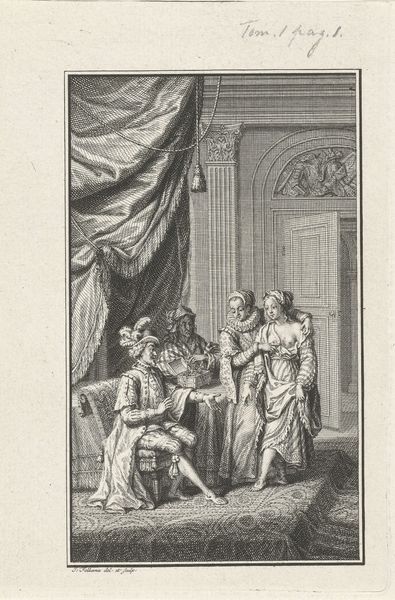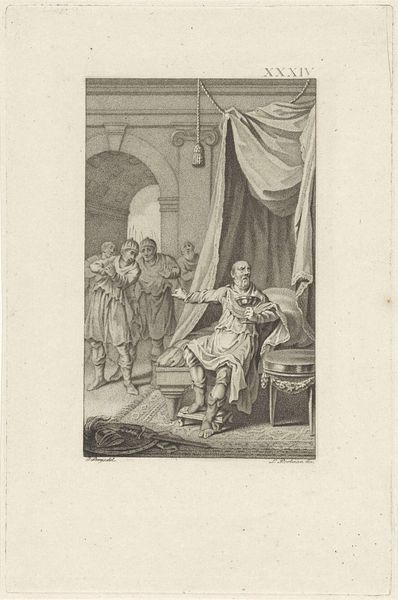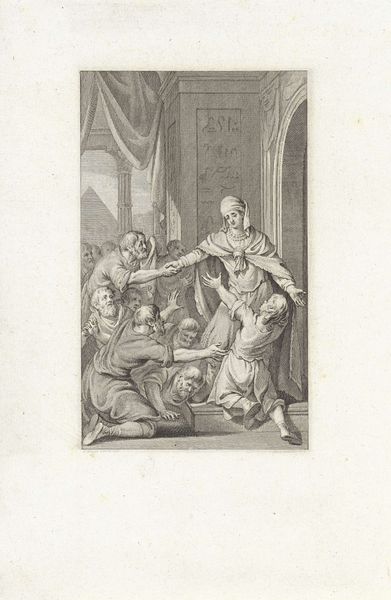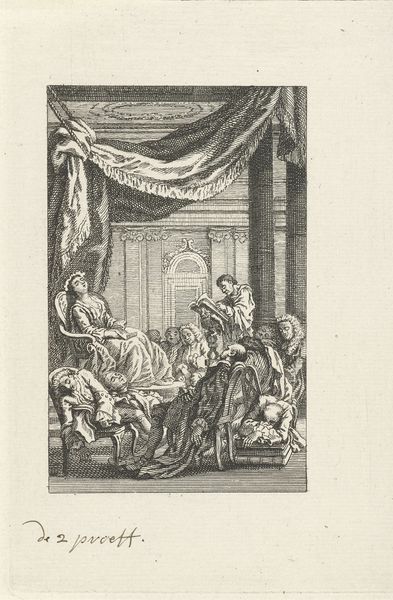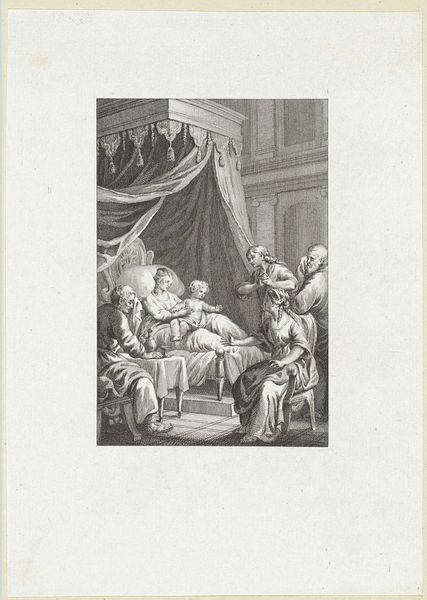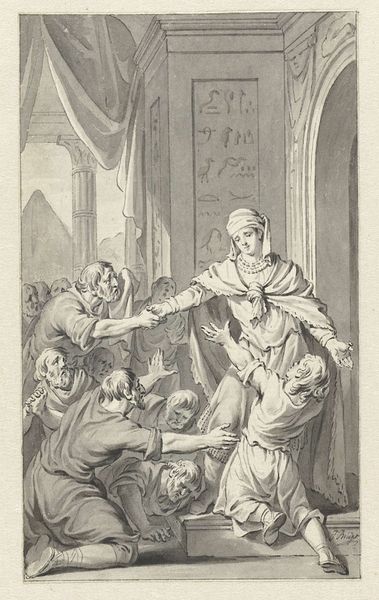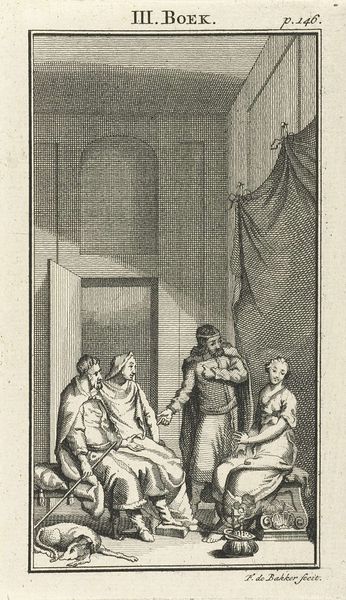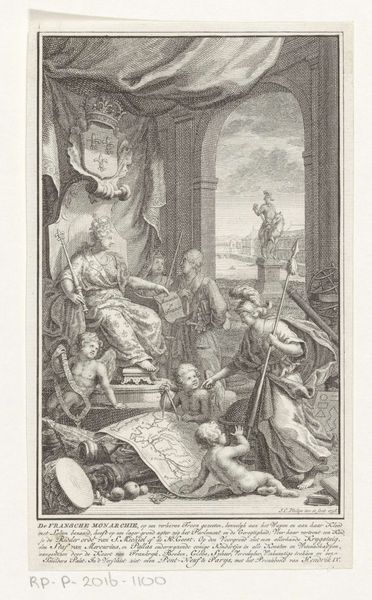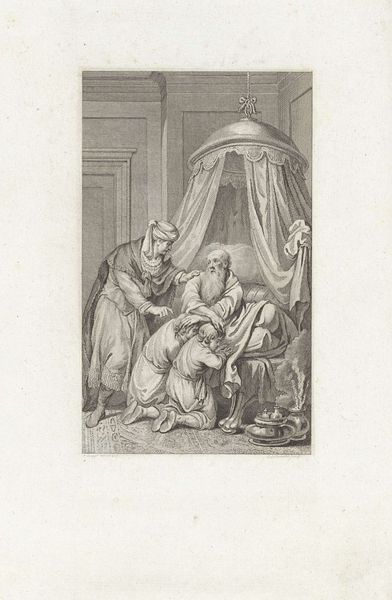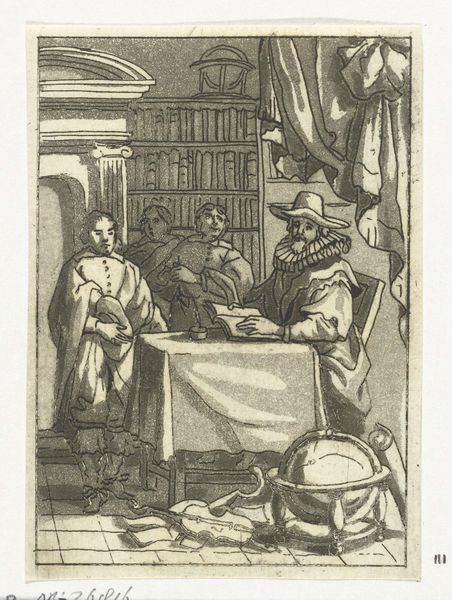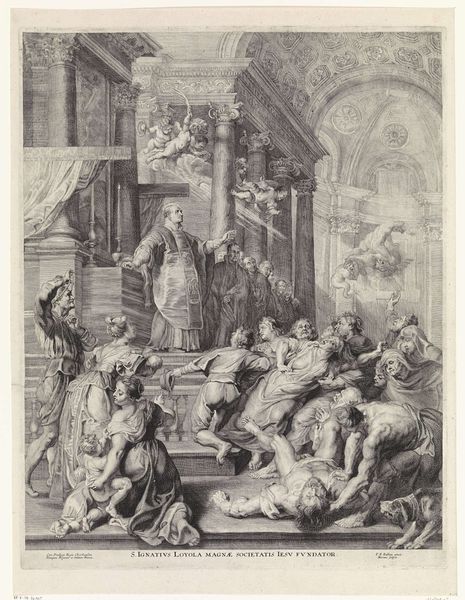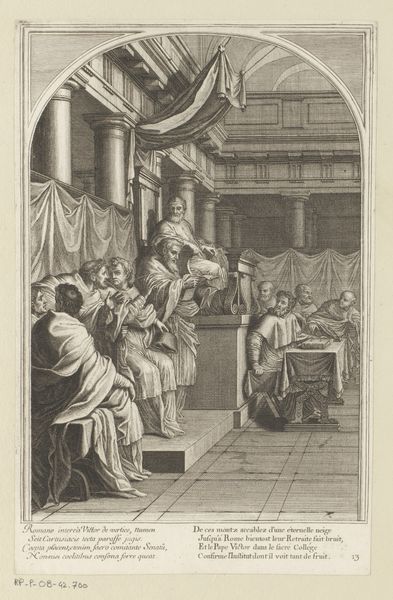
Gijsbrecht II van Amstel en de graaf van Gelder gewond naar het kapittel gebracht bij de verkiezing van een nieuwe bisschop, 1227 1786
0:00
0:00
reiniervinkeles
Rijksmuseum
Dimensions: height 171 mm, width 106 mm
Copyright: Rijks Museum: Open Domain
Curator: This is Reinier Vinkeles' 1786 engraving, now housed here at the Rijksmuseum, titled 'Gijsbrecht II van Amstel en de graaf van Gelder gewond naar het kapittel gebracht bij de verkiezing van een nieuwe bisschop, 1227' – quite a mouthful. Editor: My initial reaction is of restrained tension. Despite the apparent chaos of wounded figures being brought in, there's a sense of order imposed by the architectural setting and the somewhat detached expressions of the gathered figures. Curator: Absolutely. Vinkeles, working in that late Baroque style, really captures a pivotal moment in history. What we are seeing depicted here are the consequences and the political machinations around an election, the selection of a new Bishop in 1227. It's crucial to understand that in the 18th century, historical accuracy wasn't the primary goal. Editor: And whose history are we looking at, exactly? It’s not enough to just say ‘history’. Whose narrative is prioritized? Who gets to be wounded, who gets to stand passively by in judgement, and why? Considering Vinkeles produced this during the run-up to the Patriot Revolution, it could be argued that the image uses a historical episode to comment on power struggles and authority of the time. The supposed objectivity of historical events in art often obscures whose perspective is elevated. Curator: It certainly gives one pause to reflect on that period of unrest and what art sought to accomplish in that society. Vinkeles shows the public how deeply interwoven politics were with religion, specifically focusing on the church and its powerful leaders. What's your take on that heavy subject, looking at the engraving’s texture, mood, the general feel? Editor: What strikes me are the varying levels of visibility given to different people within a religious institution. In doing so, it gives certain individuals access to public support while others stay in the shadows. From an activist perspective, I ask why a single, presumably white, man would be elected to lead this congregation. Who were his competitors and why didn’t they make it? Curator: It's certainly an exercise in the depiction of civic life through artistic representation. And those political connotations… Editor: ... are critical. Thank you for highlighting these aspects. It gives us so much more to analyze about that period! Curator: Yes, indeed. Understanding the narrative art gives an entryway into grasping society at the time.
Comments
No comments
Be the first to comment and join the conversation on the ultimate creative platform.
